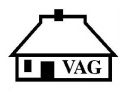Cruck Database
Vernacular Architecture Group (VAG), 2003. (updated 2021) https://doi.org/10.5284/1085003. How to cite using this DOI
Data copyright © Vernacular Architecture Group (VAG) unless otherwise stated
This work is licensed under the ADS Terms of Use and Access.
Primary contact
Vernacular Architecture Group (VAG)
84 Derby Road
Spondon
Derbyshire
DE21 7LX
Resource identifiers
- ADS Collection: 368
- DOI:https://doi.org/10.5284/1085003
- How to cite using this DOI
Overview
The Cruck Database contains the following fields, most of which are searchable. For definitions of the codes, use the links to Lists of codes on the Query page.
| Name of field | Description | Searchable? |
| Name/location | House name, address, parish and other reference details for building (plus occasional comments) | Yes |
| Site number | An additional key field when two cruck buildings have identical names and have not been otherwise distinguished | No |
| Grid reference | Alphanumeric grid reference of building | Yes |
| Country | Currently England or Wales | Yes |
| Post 1974 County | County in which building is located (but not including later unitary authorities) | Yes |
| Pre 1974 county | Pre 1974 county in which building is located | Yes |
| Function | Function of building. Including: domestic, agricultural, ecclesiastical | Yes |
| Condition | Condition of building when recorded. Including: standing, destroyed, moved | No |
| Number of cruck trusses | Total number of crucks found within structure (from 1 to 13) | Yes |
| Type of cruck | Including: True crucks, jointed crucks, base crucks | Yes |
| Type of apex | The different types of apex are illustrated and explained in pages 95-97 of Alcock 1981 | Yes |
| Form of cruck blade | Including: Elbowed, straight, smooth single curve | Yes |
| Non-cruck roof trusses | The form of other roofs in the same structure | Yes |
| Base-cruck joint | Form of blade/tiebeam joint for base-cruck and short-principal roofs. | Yes |
| Materials of original structure | Including: Brick, timber-framed, stone | Yes |
| Materials of structure when recorded | Including: Brick, timber-framed, stone | Yes |
| Published information source | Published bibliographic references | No |
| Personal information source | Unpublished sources | No |
| Date of structure | Tree-ring date (as given in the VAG Dendrochronology Database). This field is not searchable, but records with dates can be selected. Note: The dates given are the central dates of the felling date range. | No |
| VA volume number/page number | Volume and page number from in Vernacular Architecture for the date | No |
| Year Added | Note: This field was only added in 2007 and items already included were recorded as added in 2004 | No |





